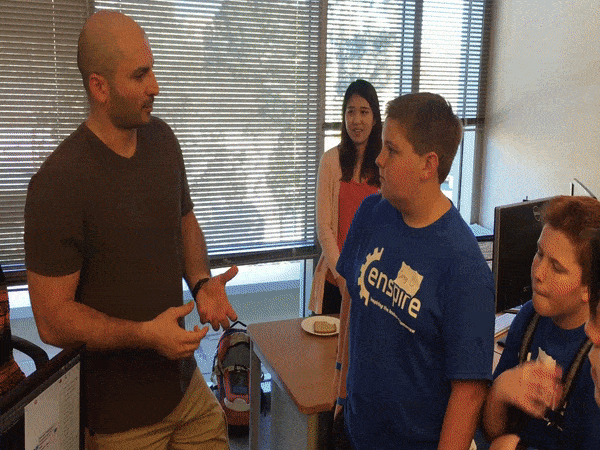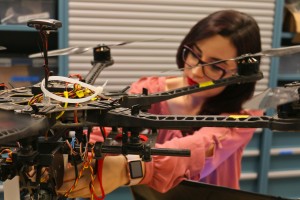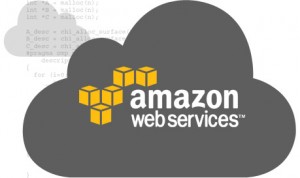 In celebration of Engineering Week, the Kastner Research Group participated in the Inspire program. Inspire is designed to introduce approximately 400+ middle school students to university-level engineering, via lab tours and a variety of hands-on projects. This event is hosted by the Triton Engineering Student Council (TESC). Pictured are PhD students Ali Khodamoradi and Dajung Lee sharing an FPGA implementation of GNU Radio. Quentin Gautier and Alexandria Shearer, also pictured, explain the nuances of structure from motion and lidar. The Kastner Research Group has a keen interest in giving students in the local community the chance to explore UC San Diego and experience engineering firsthand.
In celebration of Engineering Week, the Kastner Research Group participated in the Inspire program. Inspire is designed to introduce approximately 400+ middle school students to university-level engineering, via lab tours and a variety of hands-on projects. This event is hosted by the Triton Engineering Student Council (TESC). Pictured are PhD students Ali Khodamoradi and Dajung Lee sharing an FPGA implementation of GNU Radio. Quentin Gautier and Alexandria Shearer, also pictured, explain the nuances of structure from motion and lidar. The Kastner Research Group has a keen interest in giving students in the local community the chance to explore UC San Diego and experience engineering firsthand.
Monthly Archives: February 2016
Alexandria Highlighted in Santa Clara University Article
 Alexandria was a featured story in Santa Clara University’s Engineering School website following her NSF Graduate Research Fellowship Award. Barely six years ago she began her undergraduate career at Santa Clara University with little to no technical literacy. Now her work is taking flight here with the Kastner Research Group. The article is an interview that discusses her work on Aerial LIDAR Scanning over a Guatemalan jungle, her plans following advancement to candidacy, and her advice for incoming computer science and engineering students.
Alexandria was a featured story in Santa Clara University’s Engineering School website following her NSF Graduate Research Fellowship Award. Barely six years ago she began her undergraduate career at Santa Clara University with little to no technical literacy. Now her work is taking flight here with the Kastner Research Group. The article is an interview that discusses her work on Aerial LIDAR Scanning over a Guatemalan jungle, her plans following advancement to candidacy, and her advice for incoming computer science and engineering students.
Links: Santa Clara University Interview, Alexandria Shearer Webpage
Amazon Web Services Grant: Exploring Hardware in the Cloud
 We received an Amazon Web Services (AWS) Grant for our research on how to use machine learning to aid design space exploration of the high level synthesis (HLS) tools. Compiling a design to an FPGA is extremely time consuming (it can take days of compute time for compilation). Moreover, our research requires tens of thousands of these synthesis runs for the purpose of training better machine learning strategies. Collecting this amount of data could take several years even on a high-end workstation. For this reason, it was almost impossible to collect enough data for our research on the computer equipment in our lab. Now, with this grant ($15,300 of AWS credits), we are able to collect this data by running the process on AWS in parallel. The AWS parallel computing power will significantly speedup this process. Thanks to the AWS academic program, we now have the opportunity to further understand the nature of the hardware design spaces and build better machine learning strategies to aid application designers in the future. For those looking for more details, our initial research efforts in this space has been accepted at DATE 2016 in the article “Adaptive Threshold Non-Pareto Elimination: Re-thinking Machine Learning for System Level Design Space Exploration on FPGAs”.
We received an Amazon Web Services (AWS) Grant for our research on how to use machine learning to aid design space exploration of the high level synthesis (HLS) tools. Compiling a design to an FPGA is extremely time consuming (it can take days of compute time for compilation). Moreover, our research requires tens of thousands of these synthesis runs for the purpose of training better machine learning strategies. Collecting this amount of data could take several years even on a high-end workstation. For this reason, it was almost impossible to collect enough data for our research on the computer equipment in our lab. Now, with this grant ($15,300 of AWS credits), we are able to collect this data by running the process on AWS in parallel. The AWS parallel computing power will significantly speedup this process. Thanks to the AWS academic program, we now have the opportunity to further understand the nature of the hardware design spaces and build better machine learning strategies to aid application designers in the future. For those looking for more details, our initial research efforts in this space has been accepted at DATE 2016 in the article “Adaptive Threshold Non-Pareto Elimination: Re-thinking Machine Learning for System Level Design Space Exploration on FPGAs”.